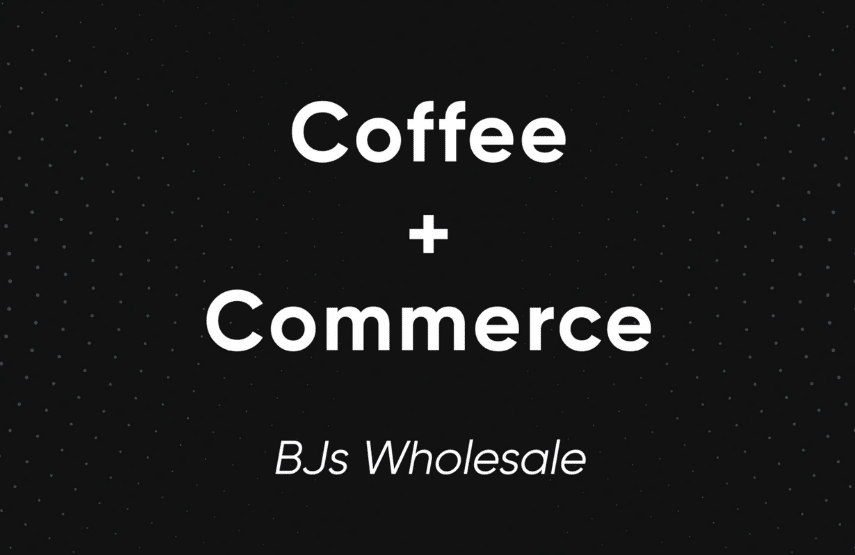Breaking Down BJ’s Wholesale Club’s E-Commerce Site [Video]

In this episode of Coffee + Commerce, we break down BJ’s Wholesale Club’s e-commerce site with Faisal Masud. Faisal is our CEO here at Fabric and was previously the director of AmazonBasics and the CTO at Staples.
BJ’s Wholesale Club is a membership-only retail club chain that reported a 350% increase in e-commerce sales in the first quarter of 2020. It was also referred to as a “bull of the day” stock at the beginning of 2021. Given the current state of BJ’s e-commerce site, these results show that the bar is set extremely low for online retail experiences.
As you will see in this episode, there are many opportunities for improvements around product design, user experience, checkout flow, and membership experience. If BJ’s and other retailers follow the advice in this episode and implement the recommended changes, they can build upon the lucky momentum they received in 2020 instead of falling flat.
[toc-embed headline=”Key Takeaways”]
Key Takeaways
[0:13]
Accurately auto-detect a shopper’s location.
The site automatically pre-selects a zip code for the shopper. In this case, a wrong one. If your system is unable to identify a shopper’s exact location, the best thing to do is to ask them where they are. This is especially important for grocers and retailers like BJ’s.
[0:49]
Avoid “hover-over” and “pop-out” features.
When the shopper hovers over a product, an Add to Cart button pops out and adds some friction to the experience. Faisal and his team A/B tested this feature at Staples and the results were not positive. Also, when breaking down the Allbirds e-commerce site, this feature hid important text on the category pages.
[1:00]
Simplify the Add to Cart function.
When the shopper adds a product to their cart, the flow of the experience becomes quite messy. It’s hard to know if the product has been added to the cart. Also, to remove the product, you must go to the cart. You can not remove products from the pop-outs on the category pages. This is not an intuitive experience.
[1:52]
Personalize experiences based on local stores and inventory.
When a shopper selects their local store, search functionality should be personalized and based on the specific products and inventory in that store. It seems that BJ’s has not implemented this feature. Furthermore, when products are out of stock, the site doesn’t reference nearby stores that may have the product in stock.
[3:25]
Ensure consistency with images on category pages.
The site does not have a parameter for images that display when the shopper hovers over products on category pages. Some products have images with textual overlays that specify item count and volume while other products do not.
[4:09]
Enable bundling features.
The site shows you similar products but does not allow you to combine or bundle products together. Instead, the shopper must navigate a poorly designed “Similar Items” chevron to find products that may complement the product they’re currently browsing.
[4:21]
Do not encourage shoppers to leave the store.
When you click on social media icons at the top of product pages you are taken off the site and directed to a social media platform. Not only is this a bad UX decision; it’s a bad business decision. You are encouraging people to leave your business for another business.
[5:09]
Avoid “sign-in to add” features.
If you want same-day delivery, you must sign in to add products to your cart. This is an unnecessary step in the purchase path and, as we have mentioned in previous episodes like the Kroger breakdown, the “sign-in to add” step creates friction and increases cart abandonment.
[5:35]
Simplify membership account creation.
To check out on the e-commerce site you must become a member or “join the club.” However, too many steps are required for non-members to become members. Instead of making non-members check-in, BJ’s could add a membership item to the cart and use billing/shipping details for membership account creation. In other words, they could make new membership a one-click feature.
To make changes based on these recommendations and upgrade your e-commerce site, a headless commerce setup is vital. This makes it easy to add new e-commerce functionality and features while maintaining full control over site experience. To learn more about this modern approach to e-commerce, check out Fabric.

Content marketer @ fabric. Previously marketing @ KHON-TV and Paramount Pictures.